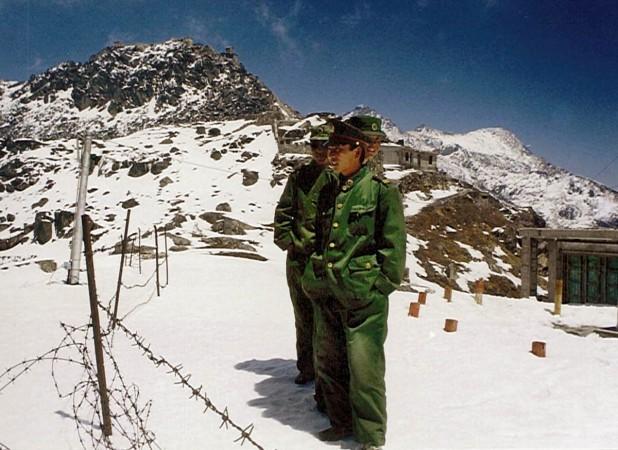
After the Chinese government claimed that the number of Indian troops at the India-China border in Sikkim had declined since the standoff began in mid-June, India has said that it has not withdrawn its troops from the region and "the status remained the same."
"Neither has the Indian Army pulled back any troops nor has the force observed any withdrawal by the Chinese side. The status remains the same," Hindustan Times quoted a source as saying.
China's foreign ministry had earlier issued a 15-page statement claiming that the number of Indian soldiers keeping vigil at the Doklam region had fallen to 40 by the end of July from the peak of about 400. The statement also said that about 270 armed soldiers had entered about 100 metres into the Chinese territory with bulldozers and halted China's road construction.
"Over the following days the number of Indian trespassers reached 400 with two bulldozers and three tents, and reached as deep as 180 metres [into Chinese territory]," the statement said, according to the South China Morning Post.
"By the end of July, 40 Indian people and one bulldozer remained."
However, India has clarified that that about 350 soldiers have been deployed at the Nathu La border since the standoff began and the number remains the same.
While numerous Chinese analysts reportedly believe that the statement was Beijing's way of trying to end the ongoing standoff, a foreign ministry spokesperson had different ideas. Geng Shuang said that the detailed statement was to "further explain to the international community the truth about Indian army's intrusion, and fully state the position of the Chinese government."
Zhao Gancheng, head of South Asian studies at the Shanghai Institutes for International Studies, also believes that through the statement, China intends to make it clear that for peace to prevail in the region, India must withdraw its forces. "To release a statement like this is to further make it clear that if India stays on, China would have to take some action," SCMP quoted Zhao as saying.
"They can come and go easily at any time. It is not a matter of numbers, the point is there are still Indians remaining," he said.

India and China have been blaming each other for intruding into the border. While the Indian side had said that the Chinese troops intruded into the Indian border in Sikkim and destroyed bunkers in June, the People's Liberation Army accused India of creating issues by halting a road construction in the area.
The Chinese foreign ministry had said that India was informed about the road construction in Doklam before hand and that it had no right to halt the construction in a foreign territory later.
"The China-Bhutan boundary issue is one between China and Bhutan. It has nothing to do with India. As a third party, India has no right to interfere in or impede the boundary talks between China and Bhutan, still less the right to make territorial claims on Bhutan's behalf."
Meanwhile, China seems to be trying to further rattle India by increasing its activities in the Himachal Pradesh and Uttarakhand border.














